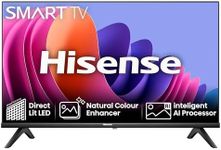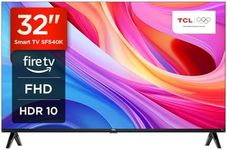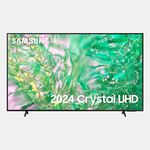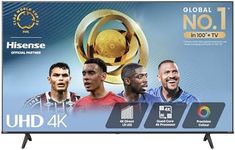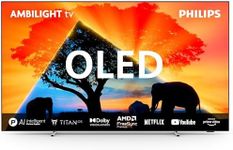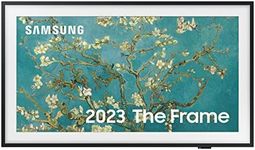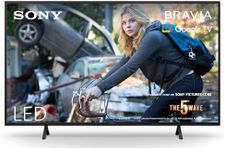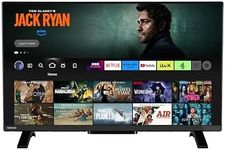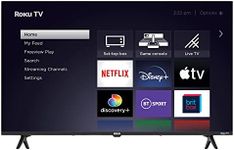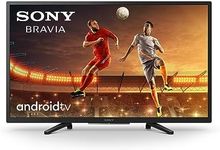Buying Guide for the Best Smart Televisions
Choosing the right smart television can greatly enhance your viewing experience. With so many options available, it's important to understand the key specifications that will impact your enjoyment and usage. By focusing on these specs, you can find a TV that fits your needs and preferences perfectly.Screen SizeScreen size refers to the diagonal measurement of the TV screen, usually in inches. This spec is important because it affects how immersive your viewing experience will be. Smaller screens (32-43 inches) are suitable for bedrooms or small living rooms, while medium screens (50-65 inches) are great for average-sized living rooms. Larger screens (70 inches and above) are ideal for home theaters or large living spaces. Consider the size of your room and the distance from which you'll be watching to choose the right screen size for you.
ResolutionResolution indicates the number of pixels that make up the picture on the screen, with higher resolutions providing sharper and more detailed images. Common resolutions include Full HD (1080p), 4K (2160p), and 8K (4320p). Full HD is suitable for smaller screens or if you're not too concerned about ultra-high definition. 4K is now the standard for most new TVs and offers excellent picture quality, especially on larger screens. 8K provides the highest resolution but is only necessary if you want the absolute best and have access to 8K content. Choose based on your desire for picture clarity and the type of content you watch.
Smart TV PlatformThe smart TV platform is the operating system that runs the TV's smart features, such as apps and streaming services. Popular platforms include Android TV, Roku TV, webOS, and Tizen. This spec is important because it affects the user interface and the availability of apps. Android TV offers a wide range of apps and Google Assistant integration, Roku TV is known for its simplicity and extensive app library, webOS is praised for its user-friendly interface, and Tizen is Samsung's platform with a sleek design. Choose a platform that you find easy to navigate and that supports the apps you use most frequently.
HDR (High Dynamic Range)HDR enhances the contrast and color range of the TV, making the picture more vibrant and realistic. This spec is important for improving the overall picture quality, especially in scenes with bright and dark elements. There are different HDR formats, such as HDR10, Dolby Vision, and HLG. HDR10 is the most common and provides a good improvement in picture quality. Dolby Vision offers an even better experience with dynamic metadata, adjusting the picture scene by scene. HLG is used mainly for live broadcasts. If you enjoy watching movies and shows with stunning visuals, look for a TV with good HDR support.
Refresh RateRefresh rate is the number of times the TV updates the image on the screen per second, measured in Hertz (Hz). This spec is important for smooth motion, especially in fast-paced content like sports or action movies. Common refresh rates are 60Hz, 120Hz, and higher. A 60Hz refresh rate is sufficient for most regular viewing, while 120Hz provides smoother motion and is better for gaming and sports. Higher refresh rates are available but may not be necessary unless you're a serious gamer or very sensitive to motion blur. Choose based on the type of content you watch and your sensitivity to motion.
ConnectivityConnectivity refers to the ports and wireless options available on the TV, such as HDMI, USB, Ethernet, Wi-Fi, and Bluetooth. This spec is important for connecting external devices like gaming consoles, soundbars, and streaming devices. Ensure the TV has enough HDMI ports for your needs, typically at least three. USB ports are useful for playing media from external drives. Ethernet and Wi-Fi are essential for internet connectivity, while Bluetooth allows for wireless connections to speakers and other devices. Choose a TV with the connectivity options that match your current and future needs.
Audio QualityAudio quality refers to the sound performance of the TV's built-in speakers. This spec is important for an immersive viewing experience, as good audio can enhance the impact of what you're watching. Look for TVs with higher wattage speakers and technologies like Dolby Audio or DTS for better sound quality. However, built-in speakers often have limitations, so consider if you'll be using external audio systems like soundbars or home theater systems. Choose based on your preference for audio quality and whether you plan to invest in additional audio equipment.

